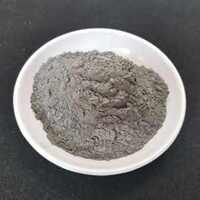**The Unbeatable Champion of 3D Printing: What’s Tough, Bendy, and Builds Anything?**
(What Is The Strongest Most Flexible 3d Printing Material)
Picture a material that acts like rubber but laughs when you try to snap it. Imagine something as tough as a car tire but shaped into tiny gears, phone cases, or even custom shoes. Welcome to the world of TPU—the superhero of 3D printing materials. If strength and flexibility had a lovechild, TPU would be it. Let’s break down why this stuff is taking over workshops, labs, and creative studios everywhere.
TPU stands for thermoplastic polyurethane. That’s a mouthful, but think of it as plastic with a yoga instructor’s flexibility. Unlike brittle materials that crack under pressure, TPU bends, stretches, and bounces back. Drop a TPU phone case? It hits the floor, flips mid-air, and lands like a cat. Run over a TPU-made drone part with a bike? It flattens, then pops back into shape. This stuff doesn’t just survive chaos—it thrives in it.
How does it compare to common 3D printing materials? Take PLA, the popular starter material. PLA is like that friend who’s great at following recipes but melts under a little heat. It’s stiff, easy to print, and eco-friendly, but snap a PLA hook by accident and it’s game over. ABS plastic is tougher, handles heat better, and survives rough use. But printing ABS smells like burnt popcorn and warps if your printer sneezes. TPU? No toxic fumes, no warping tantrums. It prints smoothly (with the right settings) and works harder than both.
The magic is in TPU’s structure. It’s a “thermoplastic elastomer”—fancy talk for “plastic that acts like rubber.” Heat it, and it softens for printing. Cool it, and it becomes a flexible yet sturdy wonder. Engineers love it for parts that need to move, bend, or absorb shocks. Designers use it for clothes with woven-in flexibility. Even doctors use TPU for custom braces that adjust as injuries heal.
Let’s talk real-world wins. Car manufacturers print TPU gaskets and seals that outlast traditional rubber. Athletes wear 3D-printed TPU insoles that mold to their feet, reducing strain during marathons. Robotics teams build grippers for robot arms using TPU—soft enough to grab an egg, strong enough to hold a wrench. Ever seen a drone with collapsible landing gear? That’s TPU too. It folds on impact, then springs back for the next flight.
TPU isn’t perfect, of course. Printing it needs patience. Speed up the printer, and the material might jam or tangle. It’s also pricier than PLA or ABS. But the trade-offs are worth it. Once you dial in the settings, TPU becomes the ultimate team player. It sticks to print beds, layers smoothly, and delivers results that feel almost alive.
Why does this matter? Because TPU bridges the gap between “durable” and “adaptable.” Traditional manufacturing often forces a choice: make something hard or make something flexible. TPU says, “Why not both?” From prototyping car parts to crafting unbreakable phone cases, this material is rewriting the rules.
(What Is The Strongest Most Flexible 3d Printing Material)
Still not convinced? Try bending a TPU sample. You’ll push, twist, and stretch it—and it’ll still smile back, unbroken. In a world where materials often specialize in one trait, TPU masters two. It’s the quiet revolution in 3D printing, turning “what if” into “what’s next” for inventors, artists, and engineers. No grand wrap-up needed—the material speaks for itself.
Inquiry us
if you want to want to know more, please feel free to contact us. (nanotrun@yahoo.com)

